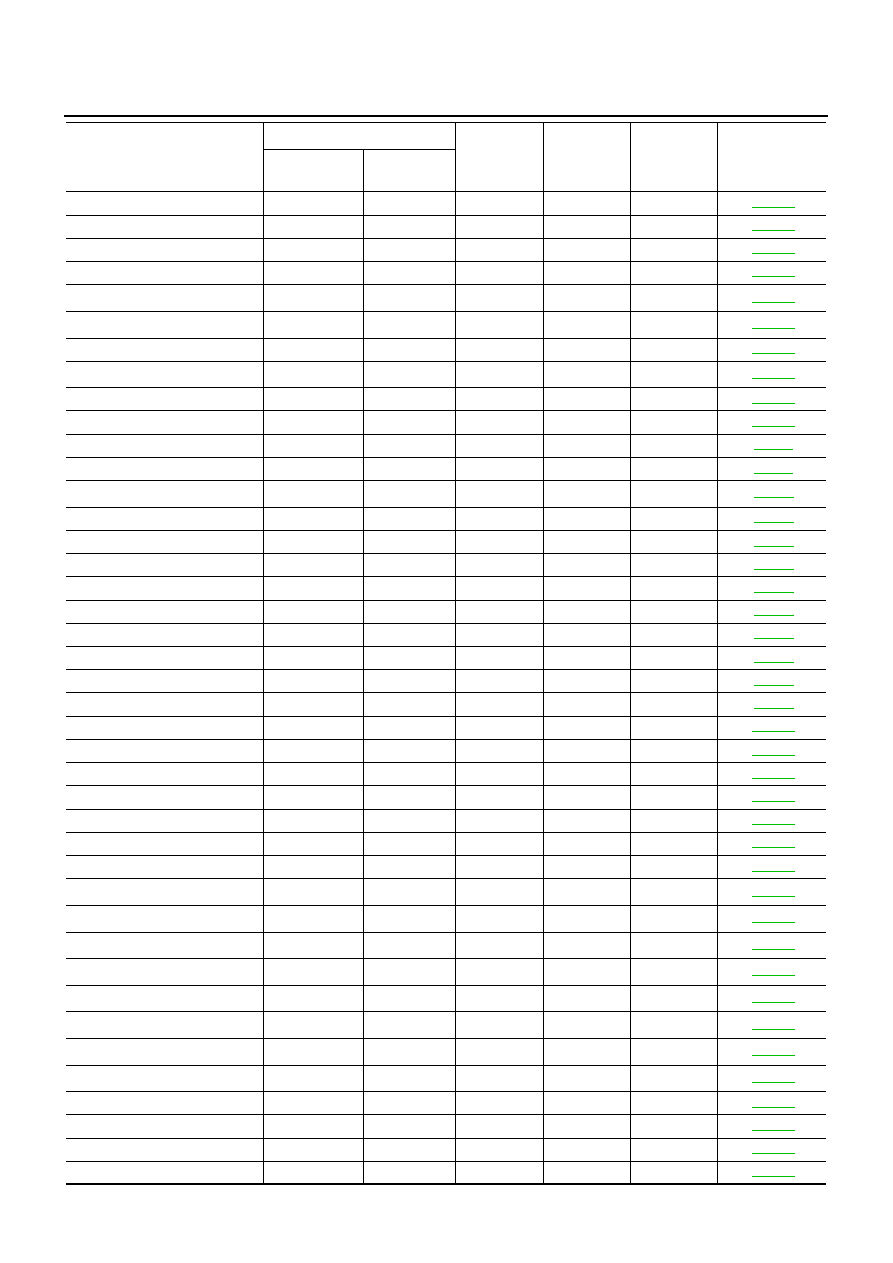Nissan Almera Tino V10. Manual - part 308

EC-58
[QG (WITH EURO-OBD)]
ON BOARD DIAGNOSTIC (OBD) SYSTEM
KNOCK SEN/CIRC-B1
P0327
0327
—
—
×
KNOCK SEN/CIRC-B1
P0328
0328
—
—
×
CKP SEN/CIRCUIT
P0335
0335
—
—
×
CMP SEN/CIRC-B1
P0340
0340
—
—
×
TW CATALYST SYS-B1
P0420
0420
×
×
×
*
4
TW CATALYST SYS-B2
P0430
0430
×
×
×
*
4
PURG VOLUME CONT/V
P0444
0444
—
—
×
VEH SPEED SEN/CIRC*
5
P0500
0500
—
—
×
PW ST P SEN/CIRC
P0550
0550
—
—
×
ECM
P0605
0605
—
—
×
PNP SW/CIRC
P0705
0705
—
—
×
ATF TEMP SEN/CIRC
P0710
0710
—
—
×
VEH SPD SEN/CIRC AT*
5
P0720
0720
—
—
×
ENGINE SPEED SIG
P0725
0725
—
—
×
A/T 1ST GR FNCTN
P0731
0731
—
—
×
A/T 2ND GR FNCTN
P0732
0732
—
—
×
A/T 3RD GR FNCTN
P0733
0733
—
—
×
A/T 4TH GR FNCTN
P0734
0734
—
—
×
TCC SOLENOID/CIRC
P0740
0740
—
—
×
L/PRESS SOL/CIRC
P0745
0745
—
—
×
SFT SOL A/CIRC
P0750
0750
—
—
—
SFT SOL B/CIRC
P0755
0755
—
—
—
ECM BACK UP/CIRC
P1065
1065
—
—
×
INT/V TIM V/CIR-B1
P1111
1111
—
—
×
ETC ACTR
P1121
1121
—
—
×
ETC FUNCTION/CIRC
P1122
1122
—
—
—
ETC MOT PWR
P1124
1124
—
—
—
ETC MOT PWR
P1126
1126
—
—
—
ETC MOT
P1128
1128
—
—
—
HO2S1 (B1)
P1143
1143
×
×
×
*
4
HO2S1 (B1)
P1144
1144
×
×
×
*
4
HO2S2 (B1)
P1146
1146
×
×
×
*
4
HO2S2 (B1)
P1147
1147
×
×
×
*
4
HO2S1 (B2)
P1163
1163
×
×
×
*
4
HO2S1 (B2)
P1164
1164
×
×
×
*
4
HO2S2 (B2)
P1166
1166
×
×
×
*
4
HO2S2 (B2)
P1167
1167
×
×
×
*
4
TCS C/U FUNCTN
P1211
1211
—
—
×
TCS/CIRC
P1212
1212
—
—
×
ENG OVER TEMP
P1217
1217
—
—
—
TP SEN 2/CIRC
P1223
1223
—
—
—
Items
(CONSULT-II screen terms)
DTC*
1
SRT code
Test Value/
Test Limit
(GST only)
1st trip DTC
Reference page
CONSULT-II
GST*
2
ECM